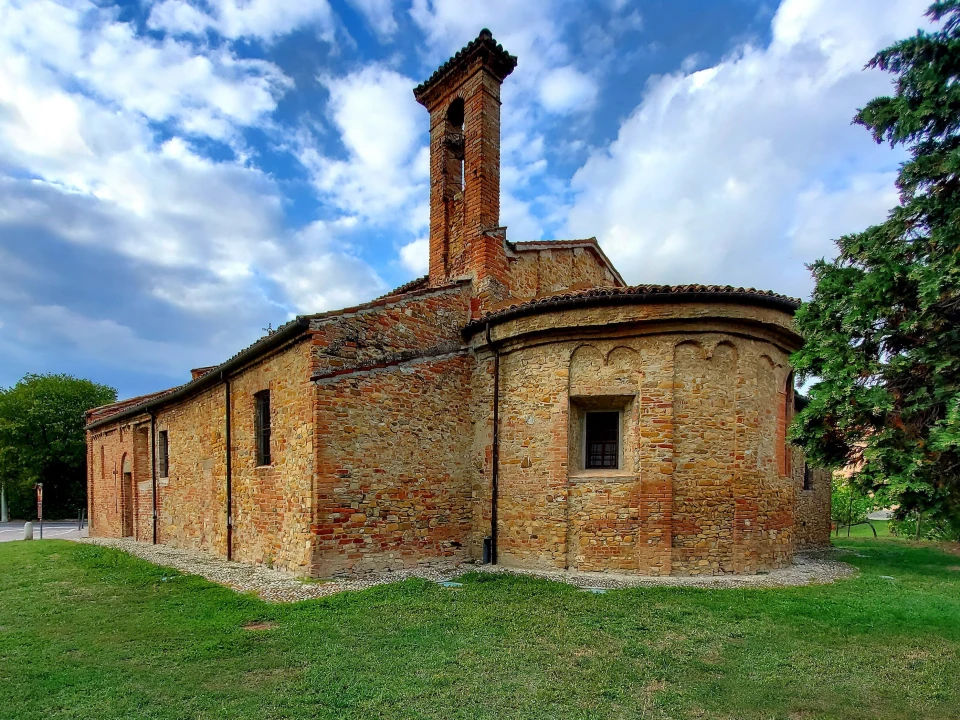Someone would be surprised to find that Volpedo is considered among the most beautiful towns in Italy. In fact, the country at first sight seems disordered, not very compact in its urban structure of the medieval imprint(still clearly visible) due to some construction interventions that have changed original physiognomy. From the other side, this is a country village, with its clear agricultural vocation, that had never been considered a tourist destination until only recently.
It happened that, the local administration, thanks to the fact that the village is the birthplace of one of the most famous Italian painters from the 19th and 20th century, Pellizza da Volpedo, tried to play this card in order to recuperate memories linked to the landscape, art and history. It proved useful – thanks to some already ongoing projects of restoration- in placing it among the most beautiful villages.
Perhaps it’s not vulgarly beautiful, but it’s a witness to historical events, especially from the 19th century. These are not very often represented in our classical typologies of “beauty” which are usually of the medieval, renaissance or baroque matrix. In Volpedo, the 19th century physiognomy is well recognized and it allows the visitor to follow an itinerary between art and the landscapes of Pelliziani’s places.
You start from the atelier made by Pelizza in 1888, after having lived and worked in his birthplace, always remaining in contact with great art streams at international level. The Atelier, which was once the place where the artist used to work, was also the place where he used to meet his friends, when he could not paint en plein air. It is open to public and is like a precious bin full of Pellizza’s memories.
Places of interest to him are revived through some reproductions in big format of his ten works. These are spread all over the village and located in chosen places, directly confronting them with the landscapes that inspired him. In this museum in the open air, the continuous comparison between today and yesterday makes us turn to the power of art, that can be met on your itinerary.
In front of Pellizza’s birth house, next to his office, there is a road, reproduced in his oil painting called La strada per Casalnoceto (1890-91). Further on, in Pellizza’s house’s backyard, a scenery that inspired his first “divisionism” painting Sul fienile (1896), can be seen. Entering via Garibaldi street towards the town centre, the landscape of his Strada della pieve di Volpedo painting (1896) shows its beauty.
Following this road along the garden’s wall of palazzo Malaspina, you enter Perino square. It once was the cattle market and today is the fruit market. In front of it, on the right, you’ll find a small street between the garden and the palace that was given by Perino Cameri ( captain from the 15th century who received the castle as a fief from the Viscontis) to Guidobono Cavalchini in the 18th century and then to the Malaspinas. Every time the palace used to be modified.
If you continue towards the heart of the town, you can see the municipal building from the 19th century( especially gothic low relief in the hall) and then you enter the main square that in the recent future is going to be restored. Narrow via della Chiesa street, set in the heart of ancient castrum, leads to piazzetta, today called Quarto Stato, where Pellizza made some of his great socially engaged paintings ( from 1892 to 1901) using farmers as models: Ambasciatori della fame, Fiumana, Il cammino dei lavoratori and finally, Il Quarto Stato. A lantern lamp indicates the position where Pellizza used to set his painting tools. The painting called Paesaggio: piazza Malaspina a Volpedo is a visible summary of this place.
If you turn then to via del Torraglio street, where houses still preserve their original stones which were taken over centuries from the nearby river bed, you go down the stairs and arrive to the old walls , from the 16th century. These were saved from destruction thanks to an intervention by Pellizza in 1904. Going through via Cavour street, you pass in front of the headquarters of former “Società operaia di mutuo soccorso” (1896) whose construction was greatly supported by Pellizza, and arrive at thousand-year old Pieve, a Romanic jewel of via Curone street. It’s a rustic church which was named in 965 and rebuilt in the 15th century, and has a façade of absolute simplicity. Inside it preserves valuable frescoes from the 15th century.
The name
The toponym derives from Latin word vicus (village) and it was confirmed in the 10th century as vico picolo, or small village , and in the 12th century as Vicus Pecudis, village of herds (from pecus, sheep, cattle).
The dish of the village
Potato Gnocchi with truffles; rabbit or hare terrine; bavarois of yellow peaches from Volpedo in strawberry salsa.




